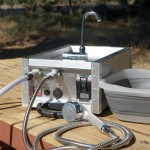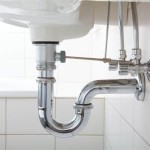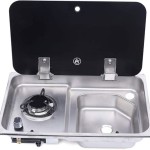Drain Flange For Bathroom Sink
A drain flange is a critical component of a bathroom sink's drainage system. It provides a secure connection between the sink and the drainpipe, preventing leaks and ensuring the smooth flow of wastewater.
Drain flanges come in various materials, including plastic, metal, and rubber. Each material has its advantages and disadvantages, and the choice depends on the specific application and the preferences of the homeowner or contractor.
Plastic drain flanges are lightweight, corrosion-resistant, and cost-effective. They are easy to install and can be used with both metal and plastic drainpipes. However, plastic flanges may not be as durable as metal flanges and can crack or break if subjected to excessive force.
Metal drain flanges, typically made of stainless steel or brass, offer greater durability and resistance to rust and corrosion. They are ideal for heavy-use applications and can withstand the rigors of frequent use and high water pressure. However, metal flanges can be more expensive than plastic flanges and require special tools for installation.
Rubber drain flanges provide a flexible connection between the sink and the drainpipe, making them suitable for use with sinks that may shift or move slightly over time. They are also effective at reducing noise and vibration associated with water flow. However, rubber flanges may not be as durable as plastic or metal flanges and can deteriorate over time due to exposure to chemicals or harsh cleaning agents.
When selecting a drain flange for a bathroom sink, consider the following factors:
- Sink material: The material of the sink should be compatible with the flange material. For example, a plastic flange may not be suitable for a cast iron sink, as the weight of the sink could cause the flange to crack.
- Drainpipe size: The flange should match the diameter of the drainpipe to ensure a proper connection and prevent leaks.
- Drainage system: The flange should be compatible with the type of drainage system used, whether gravity-fed or pumped.
- Durability: Consider the durability of the flange material and the anticipated use of the sink. A more durable flange may be necessary for heavy-use applications or sinks that are subjected to frequent movement.
- Ease of installation: Choose a flange that is easy to install for the DIY enthusiast or the contractor. Some flanges require specialized tools or skills for proper installation.
Proper installation of the drain flange is essential to ensure a leak-proof and functional drainage system. Follow these steps for successful installation:
- Clean the sink drain: Remove any debris or sealant residue from the sink drain opening.
- Apply sealant: Apply a thin bead of silicone sealant around the edge of the drain flange.
- Insert the flange: Carefully insert the drain flange into the drain opening, ensuring that the sealant is evenly distributed.
- Tighten the bolts: Hand-tighten the bolts that secure the flange to the sink. Do not overtighten the bolts, as this could damage the flange or the sink.
- Test the seal: Run water into the sink and check for any leaks around the flange. If any leaks occur, tighten the bolts further or apply additional sealant.
A drain flange is an essential component of a bathroom sink's drainage system. By choosing the right material and installing it properly, you can ensure a leak-free and efficient drainage system that will last for years to come.
Sink Drain Flange Replacement Bathroom
Drain Flange In Chrome Rp23060 Delta Faucet
Bathroom Sink Drain Flange Repair Please Help Doityourself Com Community Forums
Bathroom Sink Drain Flange Repair Diy Home Improvement Remodeling Forum
Drain Flange In Brushed Nickel Rp23060bn Delta Faucet
Plumbing How To Remove A Sink Drain Flange Home Improvement Stack Exchange
Remove Stuck Bathroom Sink Drain Flange Spinning
How To Install A New Bathroom Sink Drain Step By Guide Anderson Lumber
Installing A New Bathroom Sink
Delta 2 1 8 In Metal Drain Flange For Bathroom Sinks Pearl Nickel With Overflow Holes Rp23060nn The Home







